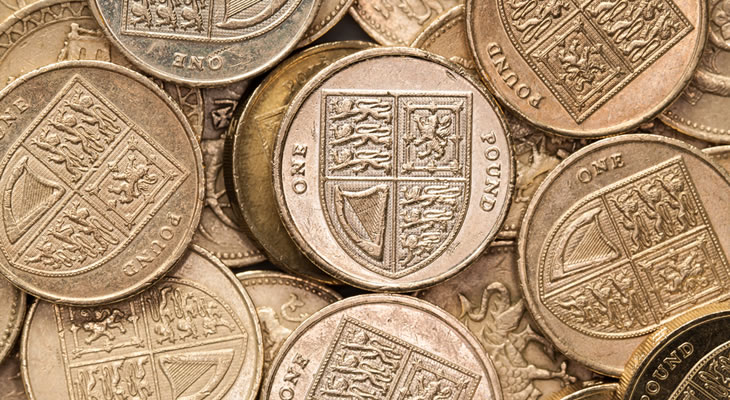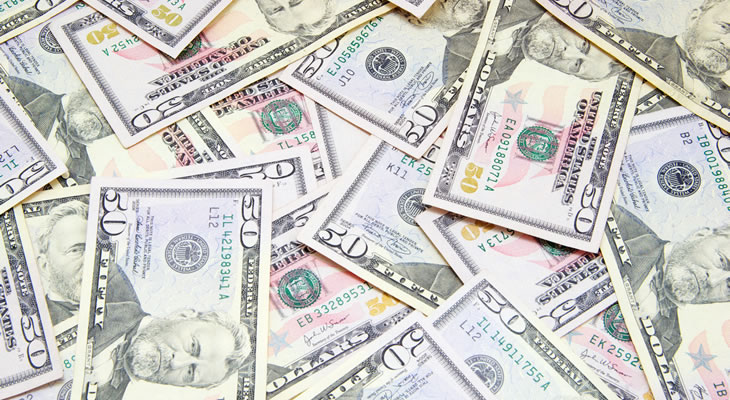- Pound soars after August manufacturing PMI beats forecasts – US Dollar weakened by cautious Fed stance
- Opinions shift over future BoE policy – Signs of knee-jerk reaction to ‘Brexit’ vote
- US Dollar increasingly volatile ahead of 2016 election – Polls point to close contest
- Further UK PMIs incoming along with BoE decision – Fed rate decision also due, freeze predicted
The Pound has been in high demand over today’s trading session, having been pushed up dramatically against the US Dollar by the implication that the UK economy is back on track just two months after the EU Referendum vote.
The US Dollar has been making less certain movement, with fluctuations against peers being brought about by the latest remarks from Fed officials.
Pound Boosted by Signs of Post-‘Brexit’ Recovery, US Dollar Unsettled by Latest Fed Dovishness
Pound exchange rates have jumped up considerably today since the results of the Markit manufacturing PMI for August was announced.
Although a rise had been forecast from 48.3 to 48.8, the reality saw an increase to 53.3 take place, which sent investors into overdrive and pushed the Pound up to 1.32 against the US Dollar (GBP USD), its best rate since the beginning of August.
As part of Markit’s report on the news, Senior Economist Rob Dobson said;
‘The August PMI data indicate a solid rebound in the performance of the UK manufacturing sector from the steep downturn that followed the EU referendum. Companies reported that work that had been postponed during July had now been restarted, as manufacturers and their clients started to regain a sense of returning to business as usual’.
From the US, the latest deterioration in the US Dollar was caused by comments from Federal Reserve official Charles Evans who, while not a direct voting member of the Fed this year, is still a reserve member of the Federal Open Market Committee (FOMC).
Speaking on Wednesday, Evans predicted that US interest rates would remain low for the foreseeable future, stating;
‘Lower policy rate expectations act as a restraint on how much long-term rates could rise following a surprise over the near-term policy path’.
UK Economic Outlook: Will BoE Start Tightening Monetary Policy after Post-‘Brexit’ Recovery?
With the recent windfall for the UK manufacturing PMI sending the Pound soaring against its rivals, questions have been raised about whether the historic Bank of England (BoE) interest rate cut to 0.25% was advisable.
Additionally, the more potent question has been voiced about whether the BoE could start to tighten, rather than ease monetary policy on such a strong sign of post-‘Brexit’ recovery.
Speaking in the aftermath of the UK manufacturing PMI result, Hargreaves Lansdown Senior Analyst Laith Khalaf said;
‘The sharp improvement in sentiment does cast some doubt over whether the BoE needed to cut interest rates at the beginning of August, though this is a bit of a chicken and egg situation, and no doubt the central bank would claim its stimulus package is partly responsible for the rebound in confidence’.
Khalaf went on to state that;
‘The gathering pile of robust economic data might start to dissuade policymakers from any further monetary easing’.
Presidential Election to Raise USD Volatility as November Vote Date Approaches
From the US, while central bank remarks have served to send the US Dollar fluctuating against the Pound and its other usual rivals, a larger event is looming that is set to turn the US currency even more unpredictable and volatile the closer it gets.
The all-encompassing event is the US Presidential Election, which has only ratcheted up tension week-by-week among US investors and economists as one of the most extraordinary elections in US history.
While neither candidate seems set to come out of the election process smelling of roses, Hillary Clinton is generally considered to be the more economically and socially stable when compared to her rival Donald Trump.
Recent polls have put Clinton’s chances of victory at 43% compared to 39% for Trump, with the latter’s surprising trip to Mexico doing little to raise his low appeal among the vital Latino voter demographic.
With the stakes high and everything to play for, it seems likely that claims and counterclaims will only intensify, leading to a greater level of unrest among voters and an increasingly fragile appearance for the US economy as the November 8th voting date approaches.
UK PMIs may Deflate GBP Value, BoE and Fed Interest Rate Decisions due in Near-Term
While the UK’s August manufacturing PMI turned out better-than-expected, the same may not be the case for tomorrow’s construction PMI and September 5th’s services PMI, both for August. While increases are expected, it remains to be seen whether the high-impact services result will end up as a Pound-boosting repeat performance.
The other two major announcements out this month for the UK and US will concern the BoE and Fed interest rate decisions, which are respectively on the 15th and 21st.
As it stands, forecasts are for a BoE and Fed interest rate freeze; making the case for the latter outcome has been Markit Chief Economist Chris Williamson, who said in response to a falling US manufacturing PMI for August;
‘The overall sluggish pace of expansion signalled by the survey, and the slacking of inflationary pressures, provides support to those arguing that interest rates should remain on hold’.
Recent GBP USD Exchange Rates
At the time of writing, the Pound US Dollar (GBP USD) exchange rate was trending in the region of 1.3292 and the US Dollar Pound (USD GBP) exchange rate was trending in the region of 0.7523.



Comments are closed.